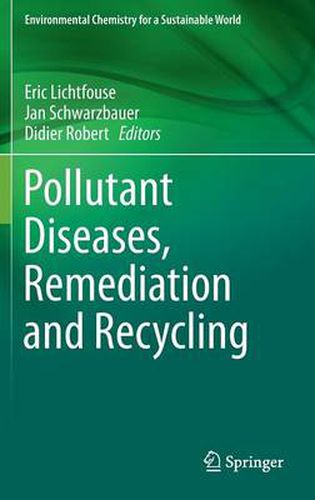Readings Newsletter
Become a Readings Member to make your shopping experience even easier.
Sign in or sign up for free!
You’re not far away from qualifying for FREE standard shipping within Australia
You’ve qualified for FREE standard shipping within Australia
The cart is loading…






This title is printed to order. This book may have been self-published. If so, we cannot guarantee the quality of the content. In the main most books will have gone through the editing process however some may not. We therefore suggest that you be aware of this before ordering this book. If in doubt check either the author or publisher’s details as we are unable to accept any returns unless they are faulty. Please contact us if you have any questions.
Pollution has no borders. This popular 70’s saying from early ecologists is surprisingly still true nowadays despite overwhelming scientific evidence and public awareness of the occurrence of artificial toxic substances in water, food, air, living organisms and the environment. This book presents advanced reviews on pollutant occurrence, transfer, toxicity and remediation. The chapter on school air quality by Dambruoso et al. highlights the overlooked health issue of airborne pollutants in buildings. Children are particularly threatened because they spend 90% of their time indoors, even in summer. The chapter on industrial wastewater pollutants by Dsikowitzky and Schwarzbauer reviews pollutants from textile, petrochemical, paper, tire, chemical and pharmaceutical plants. The authors describe advanced analytical methods and ecotoxicity tests. Industrial pollutants include dioxins and furans that are also reviewed in the chapter by Mudhoo et al. The chapter on fly ash by Gianoncelli et al. presents many techniques to treat fly ash and, in turn, decrease pollutant concentrations. The authors also explain that fly ash can be recycled in agriculture, buildings and geopolymers. The chapter on antifouling paints used for ship protection, by Sousa et al., highlights the occurrence of toxic organotins in human organs such as heart, liver and breast milk. The chapter on surfactants by Rebello et al. focuses on safety concerns for humans and the ecosystems. Remediation techniques and green surfactants are presented. The chapters on toxic metals by Nava-Ruiz and Mendez-Armenta, Abarikwu and Ristic et al. describe sources, monitoring and diseases induced by lead, mercury, cadmium and thallium. The chapter on carcinogenic nitrosamines by Li et al. presents techniques and materials such as zeolites to remediate liquids and smoke containing nitrosamines.
$9.00 standard shipping within Australia
FREE standard shipping within Australia for orders over $100.00
Express & International shipping calculated at checkout
This title is printed to order. This book may have been self-published. If so, we cannot guarantee the quality of the content. In the main most books will have gone through the editing process however some may not. We therefore suggest that you be aware of this before ordering this book. If in doubt check either the author or publisher’s details as we are unable to accept any returns unless they are faulty. Please contact us if you have any questions.
Pollution has no borders. This popular 70’s saying from early ecologists is surprisingly still true nowadays despite overwhelming scientific evidence and public awareness of the occurrence of artificial toxic substances in water, food, air, living organisms and the environment. This book presents advanced reviews on pollutant occurrence, transfer, toxicity and remediation. The chapter on school air quality by Dambruoso et al. highlights the overlooked health issue of airborne pollutants in buildings. Children are particularly threatened because they spend 90% of their time indoors, even in summer. The chapter on industrial wastewater pollutants by Dsikowitzky and Schwarzbauer reviews pollutants from textile, petrochemical, paper, tire, chemical and pharmaceutical plants. The authors describe advanced analytical methods and ecotoxicity tests. Industrial pollutants include dioxins and furans that are also reviewed in the chapter by Mudhoo et al. The chapter on fly ash by Gianoncelli et al. presents many techniques to treat fly ash and, in turn, decrease pollutant concentrations. The authors also explain that fly ash can be recycled in agriculture, buildings and geopolymers. The chapter on antifouling paints used for ship protection, by Sousa et al., highlights the occurrence of toxic organotins in human organs such as heart, liver and breast milk. The chapter on surfactants by Rebello et al. focuses on safety concerns for humans and the ecosystems. Remediation techniques and green surfactants are presented. The chapters on toxic metals by Nava-Ruiz and Mendez-Armenta, Abarikwu and Ristic et al. describe sources, monitoring and diseases induced by lead, mercury, cadmium and thallium. The chapter on carcinogenic nitrosamines by Li et al. presents techniques and materials such as zeolites to remediate liquids and smoke containing nitrosamines.